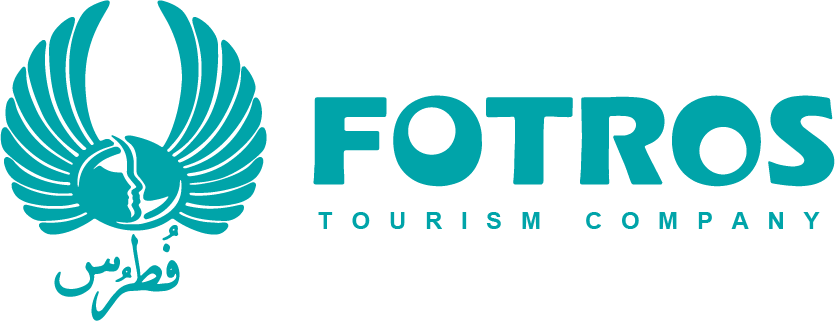
Medical Surgeries
Cataract surgery


Cataract surgery is a medical procedure performed to remove a cataract, which is a clouding of the natural lens in the eye. The lens of the eye is normally clear and helps to focus light on the retina, allowing you to see clearly. However, over time, the lens can become cloudy, leading to a gradual loss of vision. This condition is known as a cataract.
Cataract surgery is typically done to improve vision and is one of the most common and successful surgical procedures in the world. During the surgery, the cloudy natural lens is removed and replaced with an artificial lens called an intraocular lens (IOL).
There are different surgical techniques for cataract removal, including:
Phacoemulsification: This is the most common method used today. A small incision is made in the eye, and an ultrasound device is used to break up the cloudy lens into tiny pieces, which are then removed. The IOL is inserted through the same incision.
Extracapsular cataract extraction: In this method, a larger incision is made to remove the cloudy lens in one piece. This technique is less commonly used nowadays but may be necessary in some cases.
Cataract surgery is typically performed on an outpatient basis, and most patients experience improved vision shortly after the procedure. It is generally considered a safe and effective treatment for cataracts, and complications are rare. After the surgery, patients may need to use eye drops and follow post-operative care instructions to ensure a successful recovery.


Cataract surgery can significantly improve a person's vision and quality of life, and it is often recommended when cataracts interfere with daily activities or significantly reduce visual clarity. Individuals with cataracts need to consult with an ophthalmologist to determine the best course of treatment, including whether cataract surgery is appropriate for their specific situation.
is a medical procedure performed to remove a cataract, which is a clouding of the natural lens in the eye. The lens of the eye is normally clear and helps to focus light on the retina, allowing you to see clearly. However, over time, the lens can become cloudy, leading to a gradual loss of vision. This condition is known as a cataract.
Cataract surgery is typically done to improve vision and is one of the most common and successful surgical procedures in the world. During the surgery, the cloudy natural lens is removed and replaced with an artificial lens called an intraocular lens (IOL).


Before Cataract Surgery:
Consultation and Evaluation: Schedule a comprehensive eye examination with an ophthalmologist to assess the cataract's severity and discuss your surgical options.
Medical History: Provide your surgeon with a complete medical history, including any medications you are taking and any underlying health conditions.
Informed Consent: Understand the surgical procedure and the risks and benefits. Sign informed consent forms after any questions or concerns have been addressed.
Choice of Intraocular Lens (IOL): Discuss the type of IOL (monofocal, multifocal, or toric) you want with your surgeon. Your choice will impact your post-operative vision.
Fasting: Typically, you will need to fast for a few hours before surgery, as instructed by your surgeon.
Medications: Follow your surgeon's instructions regarding the use of eye drops or other medications before surgery to minimize the risk of infection and inflammation.
After Cataract Surgery:
Protective Eyewear: After surgery, you will be given a protective shield to wear over your eye, especially while sleeping, to prevent accidental rubbing or injury.
Eye Drops: Use prescribed eye drops as directed to prevent infection, reduce inflammation, and help with healing. It's crucial to follow the dosing schedule precisely.
Avoid Rubbing the Eye: Do not touch or rub your eyes during the recovery period.
Sunglasses: Wear sunglasses to protect your eyes from bright sunlight, as they may be more sensitive to light in the early stages of recovery.
Activity Restrictions: Your surgeon will provide guidelines on what activities to avoid, such as heavy lifting or strenuous exercise. Usually, it's advisable to avoid activities that could increase intraocular pressure.


Follow-up Appointments: Attend all scheduled post-operative follow-up appointments with your surgeon to monitor your progress and address any concerns.
Vision Changes: Understand that your vision may not be perfect immediately after surgery. It can take a few days or weeks for your vision to stabilize. Some patients may experience temporary side effects like glare or halos, which often improve with time.
Driving and Work: Consult with your surgeon regarding when it's safe to resume driving and return to work. The timing may vary from person to person.
Complications: Be aware of potential complications, such as infection or retinal detachment. If you experience severe pain, vision loss, or any unusual symptoms, contact your surgeon immediately.
Maintain Overall Health: Continue to manage any underlying health conditions and follow a healthy lifestyle to support your overall eye health.


Why Iran
Iran has gained recognition as a destination for medical tourism, including cataract surgery, for several reasons:
- Skilled Ophthalmologists: Iran boasts a well-developed healthcare system with highly qualified ophthalmologists and eye surgeons who are often trained in some of the world's leading medical institutions.
- Modern Medical Facilities: Many eye hospitals and clinics in Iran are equipped with state-of-the-art technology and modern surgical equipment. This ensures the latest techniques and procedures can be used for cataract surgery.
- Proven Success: Many patients who have had cataract surgery in Iran report positive outcomes and a high level of satisfaction with the results.
- Cost-Effective Care: Cataract surgery in Iran tends to be more cost-effective compared to many Western countries. The lower cost does not compromise the quality of care, making it an attractive option for international patients.
- Minimal Wait Times: In some countries, patients may experience long waiting lists for cataract surgery due to the high demand for these procedures. In Iran, you can often have the surgery performed in a relatively short time frame.
- Medical Tourism Infrastructure: Iran has developed a thriving medical tourism industry, providing services and support specifically tailored to international patients, including accommodation, transportation, and translation services.
- High-Quality Lenses: Cataract surgery often involves the insertion of intraocular lenses (IOLs) to replace the clouded natural lenses. Iranian ophthalmologists offer a range of high-quality IOLs, including multifocal and toric lenses, which can reduce the need for glasses after surgery.
Our services include:
![]() our online services include: quotes and consultation
our online services include: quotes and consultation
![]() Planning the highest word-level medical trips and quality hospitals and medical centers according to the patient's request and budget.
Planning the highest word-level medical trips and quality hospitals and medical centers according to the patient's request and budget.
![]() Appointing treatments by the most skilled and experienced doctors.
Appointing treatments by the most skilled and experienced doctors.
![]() Airport pick-up/drop off, check-ups, accompanying translator, book hotel (for patients and their families)
Airport pick-up/drop off, check-ups, accompanying translator, book hotel (for patients and their families)
![]() Pre-hospitalization / post-hospitalization care services
Pre-hospitalization / post-hospitalization care services




All-Inclusive Medical Travel Packages
based on your budget, our team will assist you in choosing the best hotels, doctors, and medical centers. Our packages include:
 Airport Pickup Services
Airport Pickup Services Airport Dropoff services
Airport Dropoff services Hotel
Hotel Ticket
Ticket visa
visa translator
translator Transfer
Transfer SIM Card
SIM Card Sightseeing
Sightseeing
 why Iran
why Iran
Patients may choose to have abdominoplasty (commonly known as a tummy tuck) in Iran for a variety of reasons
Cost, Quality of Care, Privacy and Discretion, Combined Tourism, no Waiting Times
![]()
Fotros is an Iranian health tourism company with a professional team consisting of a support team and word-level doctors in medical and cosmetic surgeries like Neurosurgery, Rhinoplasty, Breast cosmetic surgeries, Liposuction, tummy tuck, etc.










 why Iran
why Iran